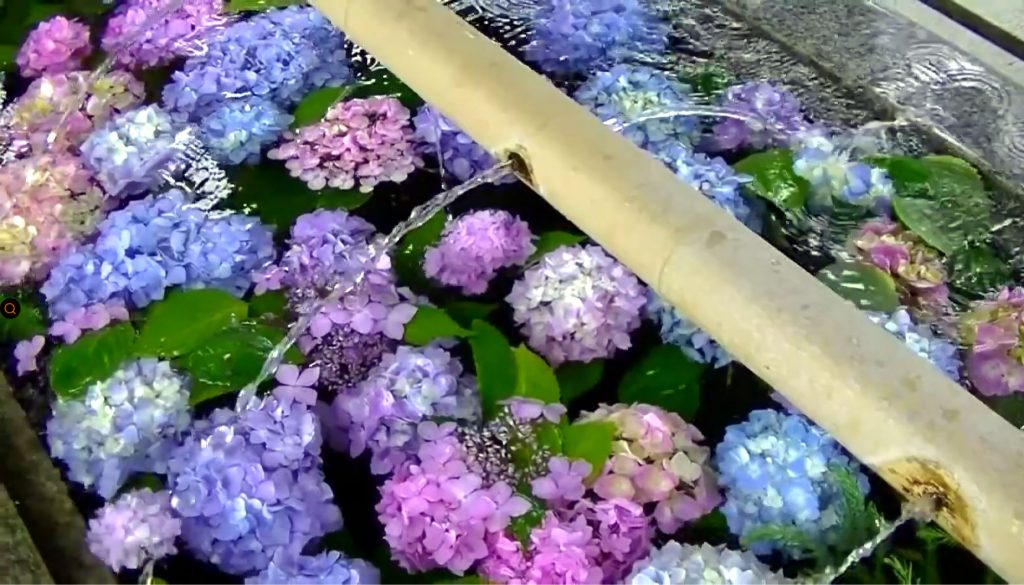
Chozu (also called temizu) refers to the water used to purify one’s hands and mouth at a chozuya (also called temizuya) before worshiping at shrines and temples. In households, the act of washing one’s face in the morning or washing hands after using the toilet is also referred to as using ‘chozu.’
Hana chozu is the practice of floating flowers in the chozu water at shrines and temples, and it has become a nationwide trend. Its history is relatively recent, beginning in 2017 when Yōkoku-ji Temple in Kyoto, which enshrines Yanagidani Kannon, floated hydrangeas in their chozuya. The temple’s chief priest wanted to encourage more people to visit the temple, feel pride as Japanese, and bridge their hearts to the temple’s principal deity.
The nationwide spread of this practice was sparked by the outbreak of the new coronavirus in 2020. To prevent infections, the use of chozuya was restricted, leading to the idea of floating colorful flowers in the unused chozuya to purify hearts and provide solace to worshipers. This beautiful hana chozu, shared on Instagram and other social media platforms, garnered attention and rapidly spread to shrines and temples across the country, leading to its establishment as a common practice.
Currently, hana chozu is recognized as an ‘Instagram spot,’ and many people visit shrines and temples with the purpose of seeing hana chozu.
手水(ちょうず、てみず)とは、神社やお寺で、お参りする前に、手水舎(ちょうずや、てみずや)で手や口を清める水、またはその行為のことをいいます。家庭でも、朝起きた時に顔を洗ったり、トイレの後、手を洗ったりすることを「手水を使う」と言ったりします。
花手水とは、そんな神社やお寺の手水に花を浮かべることをいい、今それが全国的に大流行りになっています。歴史は浅く、2017年に京都の柳谷観音(やなぎだにかんのん)をお祀りする楊谷寺(ようこくじ)が手水舎に紫陽花を浮かべたことが、すべての始まりです。一人でも多くの方にお寺に足を運んでもらい、日本人としての誇りを感じ、御本尊に心を繋げる橋渡しになればというご住職の思いからでした。
全国的に広まったきっかけは2020年から始まった新型コロナウィルスの大流行です。感染を防ぐため,手水舎の使用が制限された際に使われていない手水舎に色とりどりの鮮やかなお花を浮かべることで、心を清め参拝者の癒しになるようにと言うことで全国の神社やお寺でも花手水を取り入れました。美しい花手水が、インスタグラムなどSNSに投稿されたことをきっかけに注目を集め、全国の神社やお寺で急速に広がったことが、花手水の定着につながったとされています。
現在では、花手水はインスタスポットとして認知され、多くの人が参拝と花手水を目的に訪れるようになりました。
